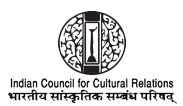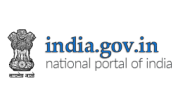Address by the Union Minister for Health and Family Welfare, Dr. Anbumani Ramadoss at the Association of Academic Health Centres (AAHC) International Forums Programme
Washington, DC
March 27, 2007
“I am extremely happy to be here today at Washington amongst you all at the meeting of the AAHC’s International Forum.
At the outset I would like to thank the AAHC for the invitation to address this august forum and to share with you all some insights and perspectives on India and its Health Sector.
I am aware of the contribution of AAHC to the health and well being of America’s Health Care System and I am particularly impressed by its leadership of the Academic Health Centers. Both in my capacity as a Minister for Health as well as a Medical Professional I recognize the Spring Dialogues as “constructive head churning” of topical interest not just to policy makers and practitioners in the United States but world wide.
I had an occasion to glimpse through the 2006 spring meeting highlights and many of the dialogues therein made me wonder whether the health policies of USA were under scanner or those of India! Like your Congress, the Indian Parliament has been demanding, “returns on investment”. I could entirely empathize with the statistical response of NIH to the Congress on HIV/ AIDS, Cancer, Heart Disease etc as my own Ministry is required to put up similar defense of its public spendings in the recently introduced, “Outcome Budget” presented annually to the Parliament of India. Similarly the raving and ranting in the 2006 Spring meeting session on the “Congress, the Budget, and Health Care Reform” sounded familiar although here I must say that my Government has taken some pro-active action to place health care on a priority burner. As atleast the India watchers amongst you would know we have launched the National Rural Health Mission and decided to increase spending on health from 0.9 % of the GDP to 2-3% over a period of 5 years. In fact the bureaucracy in the Health Ministry is now struggling for the past 2 years to come to terms with the newly acquired visibility, priority and enhanced budget of the sector.
India has been attracting global attention for its economic growth averaging close to 8% over the preceding 5 years, its steadily expanding IT prowess and its significant contributions to the scientific community of the world. Within the country there is an unprecedented optimism of the future, which I confess tends to shroud some of the ailments of the present day. The 11th Five Year Plan we are about to commence in April therefore rightly focuses upon “inclusive growth” which effectively will translate into yet higher prioritization for health and education, nutrition and sanitation, rural development and employment amongst others.
Globalization brings with it increasing threats to health including SARS, Avian Flu, HIV/ AIDS, Humanitarian Emergencies and Bio-terrorism. These and other threats to health know no boundaries as in an age of wide spread global trade and travel, new and existing diseases can cross national borders and threaten our collective security. The importance of dialogues and experience sharing of the kind facilitated by the AAHC can therefore be lost on none. Only strong collaboration amongst both developing and developed nations, increased information sharing and robust public health systems and surveillance can enable us to contain the threats to international health security.
At a more basic level the promotion of health is a fundamental value by itself, a vital public good and a basic human right. Instruments such as the Human Development Index have forced governments to redefine development. The importance of Universal access to health including water, sanitation and nutrition are essential to a balanced development.
India has both substantial achievements as well as a daunting unfinished agenda in the health sector. Longevity in the country has more than doubled since Independence in 1947; Infant Mortality Rate has fallen by 70% points; Malaria has been contained; Small pox and Guinea worm have been completely eradicated and Leprosy and Polio are nearing elimination. In the preceding 5 years over 500, 000 deaths have been averted due to the up scaling of the Directly Observed Treatment Short Course (DOTS). The Indian doctors are comparable to the best in the world and the country provides world class facilities for performing sophisticated procedures at a fraction of the cost of similar procedures in much of the developed world.
However, these achievements do not mask India’s failures. Malnutrition and rates of infant and maternal deaths have stagnated during the last decade. Although India accounts for 16.5% of the global population, it contributes to a fifth of the world’s share of diseases; a third of the diarrhoeal diseases, TB, Respiratory and other infections and parasitic infestations as well as perinatal conditions; a quarter of maternal conditions, a fifth of nutritional deficiencies, diabetes and the second largest number of HIV/ AIDS cases after South Africa.
There have been insufficient investments in public health in the past and the absence of social insurance coupled with the unpredictability of illnesses requiring substantial amounts of money at short notice is reportedly impoverishing an estimated 3.3% of India’s population every year.
The public health system is overwhelmed by the co-existence of communicable and infectious diseases along side an emerging upsurge of non-communicable diseases. It is estimated that by 2015 the number of HIV/AIDS cases would be 3 times more than the current level as would be the prevalence level of TB cases. Perinatal and child hood conditions are not expected to decline significantly. What is also of concern is the expected increase in India’s disease burden due to non-communicable diseases. Cardio vascular diseases and diabetes will more than double, cancers will rise by 25% and mental health incidences will affect about 6.5% of the populace.
These and other non-communicable diseases are expensive to treat and our focus will be on adopting preventive strategies. Access to clean water and sanitation services and better hygienic practices like hand-washing will reduce diarrhaoea. Likewise, increasing advocacy and awareness efforts against tobacco use will reduce CVD, lung and oral cancers drastically. Promotion of exercise and yoga is increasingly acknowledged to reduce stress and obesity, diabetes and other lifestyle diseases.
The National Rural Health Mission of which I spoke earlier is an attempt at building a sustainable health system for the country. It attempts to address long standing ailments of the health system including poor management of resources, centralized decision making, inadequate financing, irregular supplies of drugs and equipments, unacceptable level of absenteeism, corruption, absence of performance based monitoring, inadequate accountability, wanting HRD policies, fragmented and overlapping policies and programmes and inadequate participation of the private sector.
The expected outcomes from the Mission which extends from 2005 to 2012 include the following: -
IMR reduced to 30 per live births by 2012
Maternal Mortality reduced to 100/100,000 by 2012
TFR reduced to 2.1 by 2012
Reduction in Mortality due to Malaria, Dengue and Kalazar; Filaria elimination by 2015 and 85% cure rate under TB Dots.
4.6 million Cataract operations by 2012
Adoption of Indian Public Health Standards in all Community Health Centers
At its most simple and fundamental level the National Rural Health Mission is about decentralization and empowering local communities beginning at the village level to plan for their own health care needs. The Mission also attempts to fill critical gaps in the system, systemic as well as those relating to human resources, finances, materials and supplies and above all accountability. Since we are in the second year of the mission and we started with talking about returns on investment as your system calls it and outcome budgeting as does mine let me tell you of what we have accomplished rather than just intents and design.
At a macro level the NRHM through enhanced political priority has energized the health sector across the country. It has through institutional reforms and flexible financing led to convergent action on the part of local communities as well as pubic institutions resulting in significantly enhanced number of functional health facilities, increase in out patient cases, higher number of institutional birth deliveries and improved immunization coverage.
Close to 350,000 Accredited Social Health Activists (ASHAs) have been positioned at the village level. The ASHAs as we call them are literally beacons of hope, they are all women, a part of the local community, trained in preventive health care, community mobilizers and activists all rolled into a single persona. They promote sanitation and hygiene amongst the local communities, disseminate information on basic preventive health care and facilitate access to public health facilities particularly for women and children. It is my belief that this is one innovation under the NRHM which will have a transformational impact on health care in rural India.
The village health outposts, i.e. the 1,41,000 sub-centers as we call them have been provided with untied funds to tackle contingencies; 2045 of the 3220 Community Health Centers have been identified for upgradation to Indian Public Health Standards and over 10,000 health facilities have established patient welfare committees (Rogi Kalyan Samities). Over 200,000 doctors, 12000 midwives, 7500 staff nurses and 1200 paramedics have been appointed on contract basis to fill critical manpower gaps in the public health care facilities. To improve planning and monitoring as well as fund usage over 1300 professional Chartered Accountants and MBAs have been laterally inducted into the health sector in support of the NRHM.
In terms of outcomes this has meant an intensification of India’s determination to eliminate polio, vaccination of over 9 million children against Japanese encephalitis, elimination of neonatal tetanus from 7 states, full immunization coverage at 54% at the national level and 2 million institutional deliveries – all in the course of last one year. Over 1.3 million monthly health and nutrition days have been organized in the rural areas, 1 million Village Health and Sanitation Committees have been constituted and school health programmes initiated across large part of the country. During 2007 all states are expected to prepare Integrated District Health Actions Plan reflecting convergent action on health and determinants of health such as drinking water, sanitation, nutrition etc.
Intensive training schedules are being delivered in critical areas such as Anaesthesia, Skilled Birth Attendance and Emergency Obstetrics. National and State level Health Systems Resource Centers are being established to provide technical assistance. Monitoring and evaluation of the programme has been initiated by Development Partners such as the UNFPA/ UNICEF/ GTZ as well as by the independent Institute of Public Auditors of India. The design of the ambitious community based monitoring system is nearing completion.
A healthy India is what we are striving for and I believe this is in the best interest of not only Indians but the global community as well. In the new millennium India has been attracting the attention of the world for the vast market it provides for international trade and commerce. The United States of America is a key business partner of India and there has been a spurt of American investment in India. The Government of India has taken a number of steps to open its market, rationalize tariffs, lower entry barriers and facilitate level playing fields to promote Foreign Direct Investments. No doubt, promotion of health is a virtuous goal by itself but research has also established a strong causal association between health and economic development. Higher incomes potentially permit individuals and societies to afford better nutrition and access to better health care, better health increases productivity and enhances the ability to earn more income. A five year gain in life expectancy is associated with annual average rates of growth of real GDP per capita that are higher by 0.06 to 0.58 percentage points. It is not surprising that countries with high levels of malaria have been found to have much lower levels of per capita income. Several studies demonstrate that the HIV / AIDS epidemic has either lowered, or will significantly will lower, the rates of growth of income per capita in the high prevelance countries. Healthier workers are likely to be more productive; and healthier children more likely to exhibit better cognitive skills and become healthier adults. Reduced infant mortality and its impact on population age distribution, particularly lowering of people in dependent age groups raises the income per capita in a purely accounting sense. Smaller families have a beneficial impact on the productivity of the labour force. What does this mean for India? Analysis shows that life expectancy is likely to rise by 1.3% with a 1000 rupee (USD 20) increase in per capita health expenditure. Similarly life expectancy would rise by 2% with an increase of 10% per capita income. As one may expect the sustained economic growth of India, particularly in the last five years is leading to a decline in poverty. At another level I would like to believe that economic development is giving rise to the income of the Government of India and in turn enabling it to spend more on health including making funding commitments under the National Rural Health Mission. Economic development and Health form a, “virtuous circle” with one enabling the other. This is good news both for business persons as well as health professionals with an eye on India!
In a competitive globalised economy comparative advantage often lies with those who can innovate and deliver cost effective solutions. If the Information Technology Industry was responsible for the present growth of India, then the future of India lies in the growth of the bio-medical industry. India’s bio diversity, human resources, infrastructure facilities and a supportive government hold the promise of making it a potential star in the biomedical field in the coming years which would include the pharma, bioinformatics, health care and the R&D sectors. I believe India’s advantage in IT will enable the growth of its bioscience industry. India is also poised to take the global leadership in genome analysis, as it is in a unique position in terms of genetic resources having several ethnic populations that are valuable in providing information about disease predisposition and susceptibility, which in turn will help in drug discovery.
The recent regulatory and much awaited patent law changes have lead the Indian Pharmaceutical Industry towards exploring newer avenues of drug development, thus, promising higher capital investment in the pharmaceutical industry in the near future. The Indian Pharmaceutical Research is backed by strong Government support and availability of surplus skilled technical workers at lower costs.
At a growth rate of 9 per cent per year, the pharmaceutical industry in India is well set for rapid expansion. As a result of the expansion, the Indian pharmaceutical and healthcare market is undergoing a spurt of growth in its coverage, services, and spending in the public and private sectors. The healthcare market has opened a window of opportunities in the medical device field and has boosted clinical trials in India. India’s impact on the global biotechnology and pharmaceutical industry is accelerating. From quality supply of active pharmaceutical ingredients (APIs) to discovery of new chemical entities (NCEs), this sector is finally coming of age. The challenge, of course, lies in whether the Indian chrysalis will metamorphose profitably through innovation or will choose the less risky pathway to grow beyond generics through contract manufacturing and other services to make its presence felt worldwide.
Drug discovery may be feasible but, just like U.S.-based small cap biotechnology companies, Indian companies will have to look for partners to help bring any successful innovation to market. This realization has already spurred acquisitions, alliances between the Indian and global pharmaceuticals in R&D, and outsourcing of services and clinical trials.
The key to the success of Indian pharmaceutical companies is their ability to retain their cost advantage while matching the quality standards of the west. But lower costs alone cannot be enough. Availability of skilled manpower and a favorable regulatory environment that assures compliance with global norms are the other two legs underpinning success.
The service sector in particular is witnessing robust growth. With a growing skill set and capacity in contract research (from combinatorial chemistry to high throughput screening to assay development and validation to clinical trials) and contract manufacture, Indian companies are increasingly becoming preferred partners for western biopharmaceutical companies seeking to bring their products to the market in a timely and cost-effective manner. India already boasts more U.S. FDA GMP-approved API facilities than any other nation other than the U.S.
Another area in which India has a competitive advantage is health tourism. In the last five years, the number of patients visiting India for medical treatment rose from 10,000 to about 150,000. With an annual growth rate of 30 percent, India is already inching closer to Singapore, an established medical care hub that attracts 150,000 medical tourists a year. Hospitals in India can conduct the latest medical procedures at very low costs. An estimated 100,000 "Medical Tourists" visited India last year, representing a 20 per cent jump over the previous year. More and more people have started traveling to India for Medical Treatment and Medical Tourism is finally coming of age.
India boasts of several good private owned hospitals with facilities second to none. They have some of the best doctors, with most top end being educated in USA and UK. When it comes to becoming a doctor, India also has some of the stringest criteria. Language is another plus factor - English, which is widely spoken throughout the country and in all good hospitals. Furthermore, the costs are much lower than most countries and most importantly, there are no waiting lists. With all the media hype about medical tourism, most hospitals have geared themselves up for medical tourists from abroad.
Medical Tourism companies in India have introduced several packages for patients traveling to India making it convenient for the patient to have peace of mind during travel without the tension of what to do next. With the introduction of the medical visa, it will now be easier than ever to travel to India.
The concluding message I would have is that whether you are an entrepreneur or a sick person in need of care, India is where you need to be.
It is possible to endlessly talk about India’s Health sector. We, no doubt, have miles to go notwithstanding the distance covered. I am aware that this is not the most succinct account of the health sector of India and I have consequently bared myself to questions by innumerable experts present in today’s gathering. So without consuming your time to ask questions, I would like to thank you for the patient hearing as well as for the opportunity to present India’s case in this year’s Spring Dialogues”.







